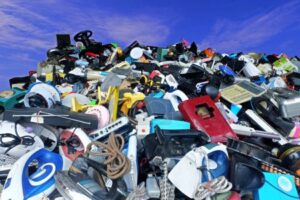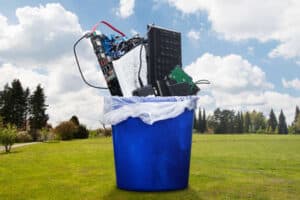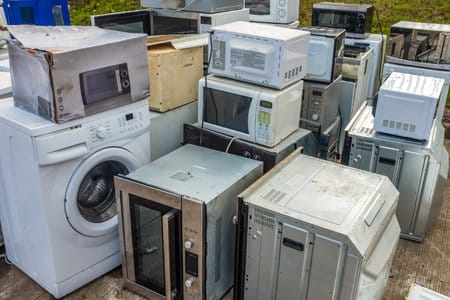Waste Electrical and Electronic Equipment designated by the acronym WEEE or D3E includes a set of electronic devices. The latter have the particularity of operating thanks to electricity directly on mains or battery (battery). Examples of D3E include TV and computer screens, appliances of all sizes. When they are broken down or at the end of their life, these devices become waste that can be recovered in 3 ways. INFO LIQUIDATION RECYCLE, a company specializing in the destruction of electronic equipment, presents its three solutions to recover D3E.
Reuse of D3E
Before disposing of EEE, it is recommended to be sure that it is indeed at the end of its life. Indeed, reuse is one of the solutions for the recovery of WEEE. If the device is permanently dead, then another procedure is triggered.
Electrical and Electronic Equipment (EEE) is complex. Depending on its nature, a device may contain the following:
- precious metals (gold, silver, copper…);
- toxic substances (mercury, arsenic, heavy metals…);
- Plastics;
- glass;
- Etc.
The handling of these components, most of which are dangerous, is governed by strict laws that preserve human health and the integrity of the environment. Management begins at the place of use. As soon as the equipment has fallen out of use, it must always be placed in a special EEE bin. It is dangerous to throw your worn ( or broken) computer or any other D3E into the wild.
At the customer’s request, INFO LIQUIDATION RECYCLE can provide him with a bin pack specially designed to collect WEEE. This pack can contain several kilos of D3E. It is not designed to contain flammable products (gasoline containers, gas cylinders, etc.).
Treatment

The destruction of used electronic equipment follows precise and rigorous steps. Once the D3E collection pack is full, simply contact us again for a pick-up. An appointment will be made at your convenience. When the time comes, one of our company’s carriers will come to your home to pick up the pack. The latter will then be transported to our treatment site.
On this site, we start by dismantling every electrical and electronic piece of equipment. This makes it possible to sort the different components of the equipment. Toxic materials are safely set aside. All this is done by hand and through the use of professional equipment.
This is followed by the depollution stage, which destroys the toxic nature of the various separate components. From then on, they will move on to treatment.
At the actual treatment stage, INFO LIQUIDATION RECYCLE uses its industrial equipment to treat WEEE in a categorized way. The screens are deconstructed so that hazardous components can be processed. Small devices are disintegrated without being crushed. This makes it possible to extract dangerous components safely. Among these dangerous components are batteries, batteries and other accumulators of electrical energy.
As for refrigeration equipment, it is contained in inert nitrogen. The gases are extracted and then cryo-condensed. Then comes the turn of plastics that are treated by exclusive separation of polymers. The cables are crushed so that the metals (iron, copper…) they contain can be recovered. The plastic covering these cables is treated in the same way as other waste of the same nature and derived from WEEE.
Recycling-recovery
The processing in our electronic recycling plant ultimately makes it possible to have materials grouped according to their nature. Thus, gold remains on one side and copper on the other. Glasses and plastics also have their distinct groups. This is the case for all items recovered from the D3E processing. Once the groups are formed, the recyclable materials are transported to consuming industries. These include plastics, steel mills, foundries, etc. In other words, each recyclable material is sent to the sector concerned for recovery. Of course, the nature of this process depends on the material recovered as well as the family of the treated WEEE.

According to serious studies, an average of 75.8% of a D3E is recycled. For an electric lamp, for example, 90% of its weight is recycled. We can recover metals, glass and plastic. Computer recycling or other EEE makes it possible to obtain new raw materials. Indeed, the phone or computer you are currently using may be from a D3E recycling.
Previous statistics show that a D3E is never fully recycled. INFO LIQUIDATION RECYCLE systematically destroys non-recyclable materials.

